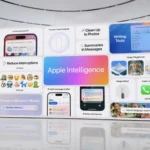

The Future of Connectivity: Unleashing the Power of 6G Technology
Understanding 6G Technology
As we stand on the cusp of a new era in telecommunications, 6G technology is set to revolutionize connectivity and data transmission. This next-generation technology promises to bring unprecedented speed, efficiency, and innovation to the digital landscape, propelling us into a future where seamless, high-speed connectivity is the norm. In this article, we explore the key features of 6G, its potential applications, and the impact it will have on various industries.
What is 6G?
6G, or sixth-generation wireless technology, represents the next leap in mobile connectivity, building on the foundations laid by 5G. While 5G brought significant improvements in speed, latency, and device connectivity, 6G aims to enhance these capabilities further, offering speeds up to 100 times faster than 5G and reducing latency to near-zero levels. This will enable real-time data transmission and ultra-reliable low-latency communication (URLLC), essential for critical applications such as autonomous vehicles and remote surgeries.
Key Features of 6G
- Unprecedented Speed: 6G is expected to deliver peak data rates of up to 1 terabit per second (Tbps), enabling instantaneous downloads and seamless streaming of ultra-high-definition content.
- Low Latency: With latency potentially reduced to microseconds, 6G will support real-time applications that require immediate feedback, such as augmented reality (AR) and virtual reality (VR).
- Enhanced Connectivity: 6G will support a massive number of connected devices, facilitating the growth of the Internet of Things (IoT) and smart cities.
- AI Integration: Artificial intelligence (AI) will be deeply integrated into 6G networks, optimizing performance, managing resources, and enhancing security through intelligent algorithms.
- Energy Efficiency: 6G will prioritize sustainability, incorporating energy-efficient technologies and renewable energy sources to reduce the environmental impact of increased data usage.
Potential Applications of 6G
Transforming Industries with 6G
- Healthcare: 6G will enable advanced telemedicine applications, including remote surgeries and real-time health monitoring, providing high-quality medical care to remote areas.
- Autonomous Vehicles: The low latency and high reliability of 6G will facilitate the widespread adoption of autonomous vehicles, allowing for safer and more efficient transportation systems.
- Smart Cities: With enhanced connectivity, 6G will support the development of smart cities, integrating IoT devices for better traffic management, energy efficiency, and public safety.
- Entertainment: The entertainment industry will benefit from 6G’s high speeds and low latency, enabling immersive experiences in AR, VR, and cloud gaming.
Advanced Connectivity Technologies
Reconfigurable Intelligent Surfaces (RIS)
Reconfigurable intelligent surfaces (RIS) are an innovative technology that optimizes wireless communications by dynamically altering their physical properties. RIS can enhance signal strength, improve coverage, and reduce energy consumption, making them a crucial component of 6G networks oai_citation:1,These are the Top 10 Emerging Technologies of 2024 | World Economic Forum.
High-Altitude Platform Stations (HAPS)
High-altitude platform stations (HAPS) operate in the stratosphere, providing connectivity to remote and underserved areas. HAPS can deliver internet access to over 2.6 billion people in 100 countries, enhancing digital inclusion and economic growth oai_citation:2,These are the Top 10 Emerging Technologies of 2024 | World Economic Forum.
Integrated Sensing and Communication (ISAC)
Integrated sensing and communication (ISAC) combines data collection and transmission in a single system, enabling cost and hardware efficiencies. ISAC can be used for environmental monitoring, smart agriculture, and infrastructure management, making wireless networks more intelligent and responsive oai_citation:3,These are the Top 10 Emerging Technologies of 2024 | World Economic Forum.
The Road Ahead: Challenges and Opportunities
Overcoming Technical Hurdles
Despite the promising prospects, 6G development faces several challenges, including the need for new spectrum allocation, advanced hardware, and robust cybersecurity measures. Collaboration between governments, industry leaders, and researchers will be essential to address these issues and ensure the successful deployment of 6G networks.
Embracing the Future
As we move closer to the realization of 6G, it is crucial for businesses and policymakers to prepare for the transformative impact of this technology. Investing in research and development, fostering innovation, and promoting digital literacy will be key to unlocking the full potential of 6G and ensuring that its benefits are widely accessible.
Conclusion
6G technology promises to usher in a new era of connectivity, with far-reaching implications for various industries and aspects of daily life. By delivering unprecedented speed, low latency, and enhanced connectivity, 6G will enable innovative applications and drive economic growth. As we look to the future, embracing the advancements brought by 6G will be essential for staying competitive in an increasingly digital world.
For further reading, you can explore more about 6G technology on the World Economic Forum and Gartner websites.
By TechTaker









